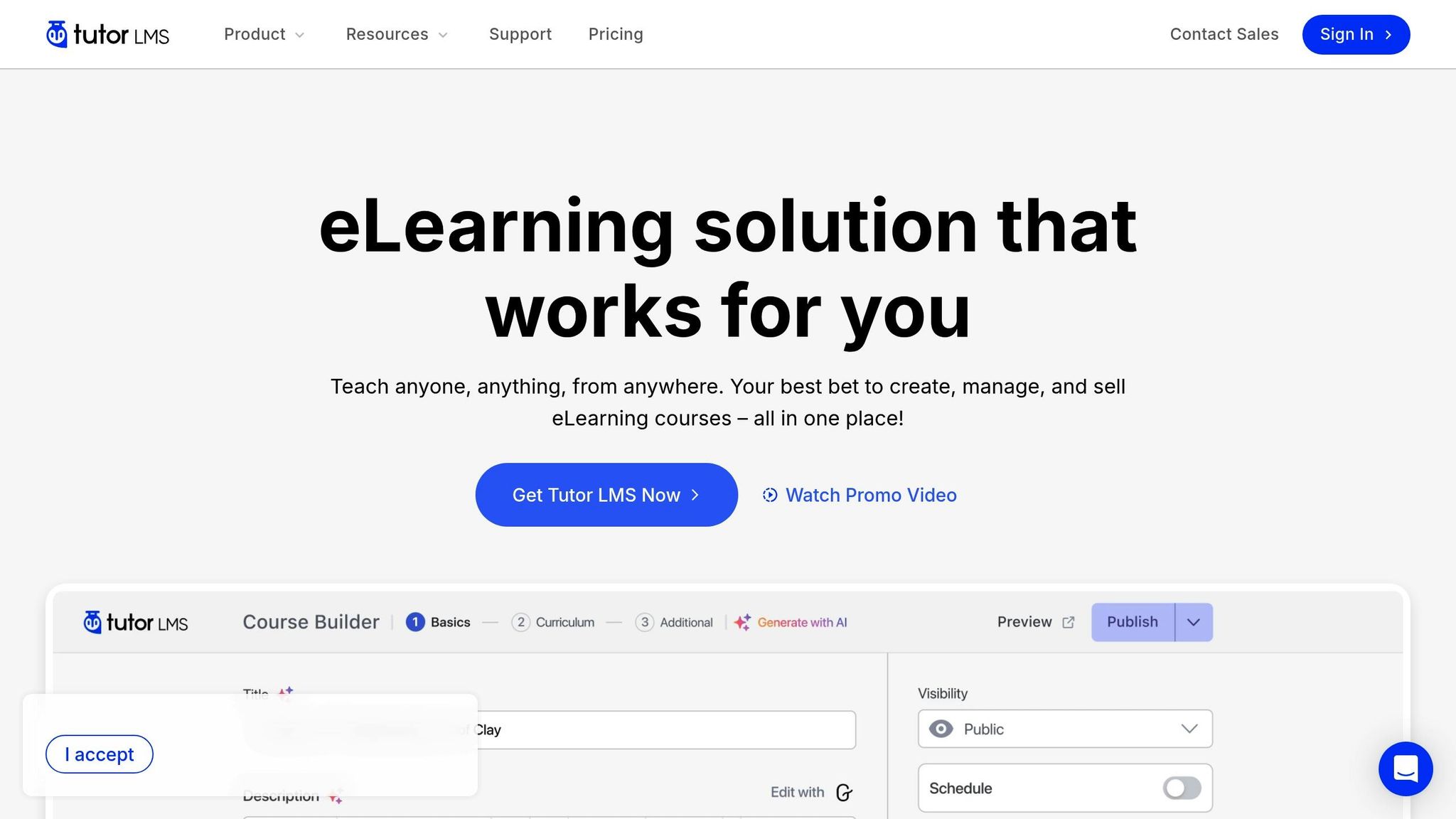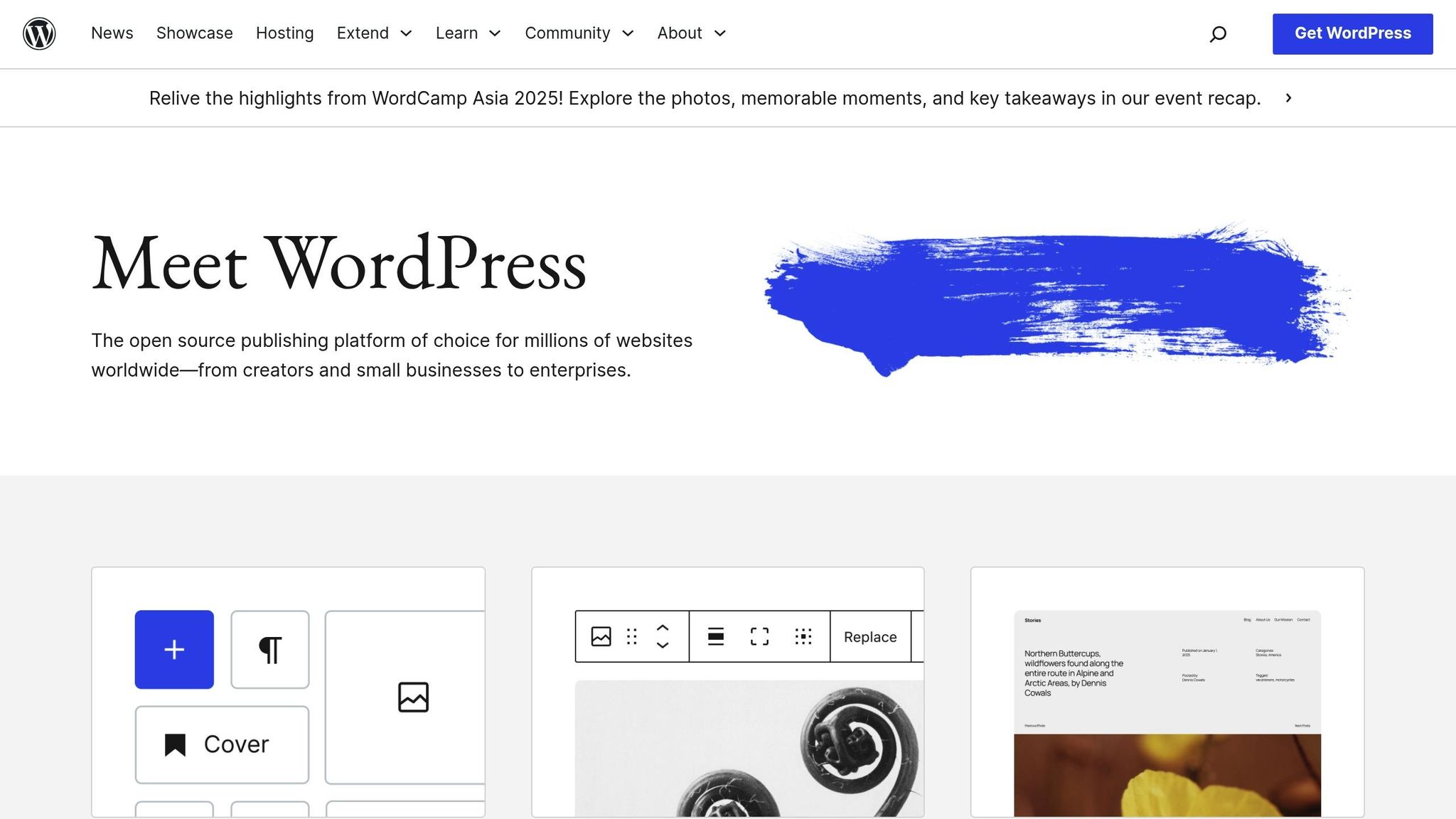Want to boost course sales and offer better value? Selling bundled courses in WordPress LMS is the way to go. Bundles group related courses into logical learning paths, helping you increase revenue while simplifying the learning experience for students.
Key Benefits of Course Bundling:
- Higher Revenue: Bundles increase the average transaction value.
- Simpler Decisions: Students get multiple courses in one purchase.
- Organized Learning: Logical course progression improves engagement.
How to Set Up Bundles:
- Pick the Right LMS Plugin: Look for features like access control, progress tracking, and payment integration.
- Create Bundles: Group courses by skill, topic, or level.
- Set Pricing: Offer discounts compared to individual course prices.
- Market Effectively: Use email campaigns, special offers, and landing pages to promote bundles.
Quick Overview of Tools and Features:
| Feature | Purpose | Benefit |
|---|---|---|
| Access Control | Manage permissions | Secure and organized access |
| Progress Tracking | Monitor learning progress | Keep students engaged |
| Payment Integration | Automate transactions | Smooth purchasing process |
| Certificates | Reward completion | Motivate learners |
Bundled courses are a win-win: students save money while you grow your revenue. Start by evaluating your courses, setting up an LMS plugin, and creating bundles that cater to your audience’s needs.
🔥 How to Easily Create Course Bundles in Tutor LMS

WordPress LMS Bundle Setup

Setting up course bundles in WordPress requires careful configuration of your LMS plugin to ensure everything runs smoothly.
Choose the Right LMS Plugin
To manage course bundles effectively, pick an LMS plugin that supports advanced bundle features. Look for these key functionalities:
| Feature | Purpose | Benefit |
|---|---|---|
| Access Control | Set custom permissions for bundled courses | Keeps content secure |
| Progress Tracking | Monitor course completion automatically | Tracks learner achievements |
| Payment Integration | Automate bundle transactions | Simplifies the purchasing process |
| Bundle Management | Customize course packages with specific rules | Streamlines administration |
WordPress allows you to tailor your course bundles without being restricted by platform limitations.
Steps to Set Up Your Plugin
- Install and activate your chosen LMS plugin in the WordPress admin panel.
- Adjust the basic settings, including site display and user roles.
- Enable the bundle features within the plugin.
- Link your payment gateway for smooth transactions.
- Set up custom user roles as needed.
Once the plugin is ready, you can start configuring the bundle features to organize and control your courses effectively.
Setting Up Bundle Features
-
Define Access Rules
Set prerequisites, unlock courses sequentially, or apply time-based restrictions to control how learners access content. -
Track Student Progress
- Use tools to monitor progress automatically.
- Offer completion certificates to motivate learners.
- Send automated notifications to keep students engaged.
-
Organize Content
- Group similar courses together.
- Establish course hierarchies for better navigation.
- Create structured learning paths for a guided experience.
With WordPress LMS plugins, you can also customize content based on membership levels and introduce targeted upsells to enhance your offerings.
Bundle Design and Pricing
Once your LMS is set up, the next step is to design your course bundles and decide on pricing that matches your learning paths.
Build Your Bundle
Group related courses into a logical sequence that offers clear value and progression for learners. Here are some common bundle structures:
| Bundle Type | Description | Ideal For |
|---|---|---|
| Skill Path | Courses arranged to build specific skills | Learners aiming for career growth |
| Topic Collection | Courses covering various aspects of a topic | In-depth subject exploration |
| Level-Based | Progression from beginner to advanced | Comprehensive skill-building |
| Specialty Focus | Niche courses tailored to specific industries | Industry-specific learners |
Keep a consistent theme and learning path in mind. For example, a web development bundle might start with HTML and CSS basics and progress to advanced JavaScript techniques.
Once your bundle is structured, it’s time to decide on pricing that reflects its value.
Set Bundle Prices
Pricing should encourage sales while showcasing the bundle’s worth. Consider these strategies:
-
Value-Based Pricing
- Add the cost of individual courses.
- Offer a discounted bundle price – typically 20–30% lower.
- Highlight the savings to attract buyers.
-
Tiered Pricing
- Basic: Includes essential courses at an affordable price.
- Premium: Adds extra resources like templates or guides.
- Complete: Full access to all courses and materials.
-
Time-Based Access
- Monthly subscription for short-term learners.
- Annual packages for better value.
- Lifetime access for a one-time payment option.
After deciding on pricing, ensure payment processes are seamless for users.
Configure Payment Settings
Set up payment options and discounts to make purchasing easy and appealing:
-
Payment Gateway Integration
- Offer multiple payment methods (credit cards, PayPal, etc.).
- Enable recurring billing for subscriptions.
-
Discount Management
- Provide early bird pricing or limited-time offers.
- Offer volume discounts for group enrollments.
- Include special rates for students or organizations.
-
Access Control
- Use your LMS settings to manage access rules, ensuring learners only access the courses they’ve purchased.
These steps will help you create appealing bundles and pricing that meet both your business goals and learners’ needs.
sbb-itb-dee25d2
Marketing Your Bundles
Bundle Page Design
Create landing pages that showcase your course bundles effectively. Focus on these key elements:
Clear Value Proposition
- Highlight the total savings compared to buying courses separately.
- Show the combined retail value (e.g., "$997 value for $497").
- Point out the specific benefits of choosing bundled learning paths.
Visual Content Structure
- Use progress maps to outline the learning journey.
- Add course preview videos or screenshots to give a sneak peek.
- Feature certification badges or rewards for completing the bundle.
Social Proof Elements
- Include student success stories to build trust.
- Share statistics on progress and completion rates.
- Highlight professional credentials earned through the courses.
Promotion Tactics
Once your bundle page is ready, focus on driving conversions with these strategies:
Email Marketing Campaigns
- Segment your audience based on their interests.
- Create urgency with limited-time discounts or offers.
- Send reminders to users who left items in their cart.
Special Offers
- Offer early bird discounts (e.g., the first 50 enrollments save 30%).
- Run seasonal promotions like Back-to-School or New Year deals.
- Provide group discounts (e.g., 5+ students save 25%).
Content Marketing
- Offer free mini-courses as a preview of the bundle.
- Share real student success stories to inspire potential buyers.
- Publish blog posts focused on the bundle’s topics.
- Host live Q&A sessions to answer questions about the bundle.
Track Sales Data
After launching your promotions, keep an eye on these metrics to measure success:
| Metric | What to Track | Action Items |
|---|---|---|
| Conversion Rate | Percentage of visitors who make a purchase | Adjust pricing or page layout |
| Bundle Completion | Percentage of students finishing the bundle | Improve course sequencing |
| Revenue per Student | Average amount spent by each student | Fine-tune your bundle pricing |
| Engagement Level | Course participation rates | Enhance content delivery methods |
Use LMS analytics to gather insights:
- Monitor completion rates for individual courses.
- Identify which course combinations are most popular.
- Measure student engagement throughout the bundle.
Automate reminders for:
- Course progress milestones.
- Upcoming assignment deadlines.
- Bundle completion achievements.
- Certificate awards.
Integrate with email marketing tools to:
- Send targeted promotional emails.
- Track email engagement and conversion rates.
- Automate follow-ups with students.
- Monitor the performance of your campaigns.
Bundle Management
Once your bundles are set up and marketed, managing them effectively is crucial for keeping learners engaged and ensuring their success.
Student Progress Tools
Keep track of how students are engaging with your bundled courses using these tools:
Progress Dashboard
A centralized dashboard helps you monitor key metrics and take action:
| Metric | What to Monitor | Action Steps |
|---|---|---|
| Course Completion | Percentage of students finishing each module | Send automated check-ins at 25%, 50%, and 75% completion |
| Quiz Performance | Average scores and time taken to complete | Pinpoint topics that need more support materials |
| Engagement Time | Time spent per module | Adjust content length based on user behavior |
| Assignment Status | Submission rates and grades | Follow up on missed deadlines with reminders |
Automated Support System
Use automation to support learners based on their activity:
- Send milestone emails to celebrate progress
- Schedule assignment reminders
- Automatically issue certificates upon bundle completion
- Re-engage inactive students with follow-ups after 7 days of no login
CRM Integration
Integrate your WordPress LMS with a CRM to:
- Track individual student progress across all courses
- Group students by completion rates
- Spot opportunities to offer advanced courses to top performers
- Generate personalized progress reports
These tools provide a solid foundation for improving both the learner experience and your overall strategy.
Growth Strategies
Using tracking and support tools not only improves daily management but also helps you fine-tune your bundles for growth.
Content Updates
Keep your bundles relevant and engaging by regularly reviewing and updating them:
- Analyze completion data every quarter to refine course content
- Update materials based on student feedback and quiz results
- Add advanced modules for students who excel
Bundle Adjustments
Structure your bundles to maximize flexibility and engagement:
| Strategy | Implementation | Expected Outcome |
|---|---|---|
| Progressive Learning | Arrange courses by increasing difficulty | Boost completion rates |
| Flexible Access | Let students pause and resume courses | Lower dropout rates |
| Rewards for Milestones | Provide bonus content at key completion points | Encourage continued participation |
| Community Features | Add discussion forums for peer support | Improve retention |
Scaling Tactics
Grow your program with these methods:
- Use student feedback to fill gaps in your course offerings
- Develop bundles tailored to different skill levels
- Highlight completion certificates in your marketing
Support System
A strong support system keeps learners on track:
- Automate progress tracking to save time
- Build a detailed FAQ section for common issues
- Offer direct access to instructors for questions
- Promote peer-to-peer learning through discussion forums
Conclusion
Key Takeaways
Selling bundled courses using a WordPress LMS involves a mix of setup, pricing, and management strategies.
| Phase | Key Elements |
|---|---|
| Technical Setup | Installing and configuring a WordPress LMS plugin |
| Bundle Design | Choosing and organizing courses effectively |
| Pricing Strategy | Setting a pricing structure based on perceived value |
| Student Management | Using tools to track progress |
| Growth Planning | Regular content updates and scaling efforts |
The goal is to create bundles that offer clear benefits while ensuring smooth management for both administrators and learners.
Steps to Begin
Ready to put these ideas into action? Here’s how to get started:
- Evaluate Current Courses: Review your existing courses and group them into logical bundles that meet your audience’s needs. Focus on creating learning paths that make sense together.
- Set Up Your LMS: Configure your platform with essential features like progress tracking, automated emails, certificates, and payment processing. Make sure these settings align with the bundles you’re offering.
- Seek Professional Help: If you’re unsure about the technical side, consider working with WordPress LMS specialists. Pro Membership Sites, for example, offers end-to-end support to help you set up and manage your LMS, including bundling features and tracking tools.





